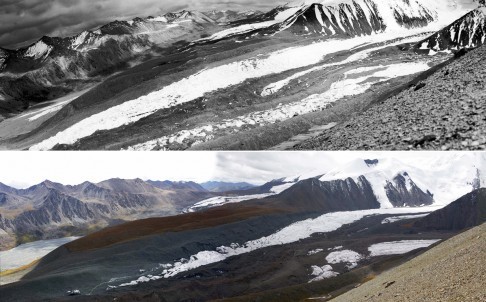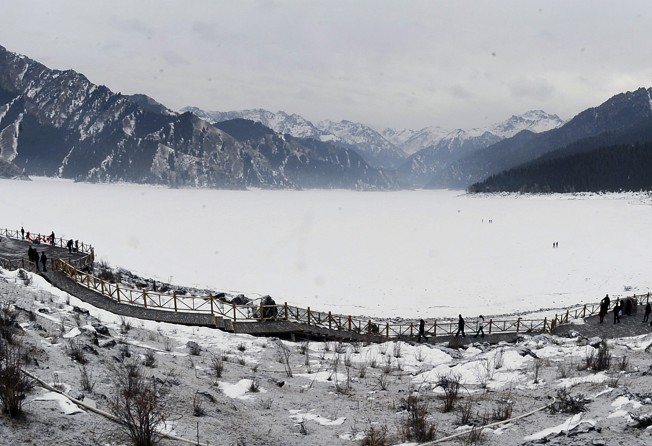
China to ban glacier tourists in mountainous Xinjiang region by 2020 after ‘inestimable’ erosion
Officials also want all other nations with glaciers that lie along ancient Silk Road route to support the move to help preserve the glaciers

Tourists are to be banned from visiting the 22,698 square km of glaciers in the northern part of China’s autonomous region of Xinjiang,within four years after causing “inestimable” erosion and other damage, mainland media reports.
Officials in the region have called on all other nations with glaciers that lie along the ancient Silk Road route to support the ban by 2020 to help preserve the glaciers, the Xinjiang government news portal Ts.cn reported.
Glaciers in western China, including Xinjiang, Tibet, Sichuan, Qinghai, Gansu and Yunnan have been shrinking at the rate of 243 sq km a year – a reduction of 18 per cent since the 1950s, mainland media reports.

However, the damage they caused to glaciers, including erosion of the surfaces of the glaciers was “inestimable”.
“We will ban glacier tourism by 2020 and propose replacing the existing facilities with holiday resorts [so that people] can observe glaciers from afar,” Li said.
We will ban glacier tourism by 2020 ... and propose that countries and regions along the Tianshan Mountain range that are part of the ‘One Belt, One Road’ development initiative sign a common declaration that states, ‘Say no to glacier tourism’
“The tourism administration also proposes that countries and regions along the Tianshan Mountain range that are part of the “One Belt, One Road” development initiative should sign a common declaration that states, ‘Say no to glacier tourism’.”
A report by Xinhua news agency in 2013 predicted that glaciers in Xinjiang would shrink by 60 per cent within 20 years and by 80 to 90 per cent within 50 years, with many small glaciers melting and vanishing completely.
The Chinese government’s One Belt, One Road initiative, which includes 65 countries on three continents, refers to the New Silk Road Economic Belt, which will link China with Europe through central and western Asia, and the 21st century Maritime Silk Road, which will connect China with Southeast Asian countries, Africa and Europe.
Xinjiang is home to nearly 21,000 glaciers covering a total area of 22,698 square km – 43 per cent of the total area of all the glaciers in the country, according to the Chinese Academy of Sciences.
The Tianshan No 1 Glacier, which is 4.8 million years old and lies only 50 km from the nearest city, had been melting and shrinking at an alarming rate, Xinhua said.
Local authorities have banned all exploration of the No 1 glacier since 2006, but unauthorised tourism, organised by farmers, was still going on last summer.
The Xinhua report, quoted Li Zhongqin, director of the academy’s glacier observation station, saying that visits by tourists, the grazing of animals and mining had all contributed to the acceleration of the glacier melting. It had shrunk by between four and eight metres each year, Li said.
The size of the No 1 glacier had shrunk by 17 per cent from an area of 1.95 sq km in 1962 to 1.62 sq km in 2014.
The Xinjiang No 1 glacier, which was chosen as a reference point when China first started studying glaciers, has been closely observed for more than 50 years. It has continued to melt and retreat in size over the years and separated into two isolated glaciers in 1993.
Last year a glacier in Akto county shifted position engulfing 1,000 hectares of pasture and damaging 70 homes. Experts blamed the disaster on global warming, saying that rising temperatures has caused changes within the glacier so that the heavier top area of the glacier had finally collapsed.
The academy has also found the size of glaciers along the Qilianshan Mountain had shrunk by 36 sq km over the past 10 years, while the lowest levels of snow on the mountain range was continually rising.
Glaciers in the area of Meili Snow Mountain in Yunnan province are also disappearing, but mostly because of global warming. The activities of tourists visitng the area had had vey little impact on the melting glaciers, Xinhua said.